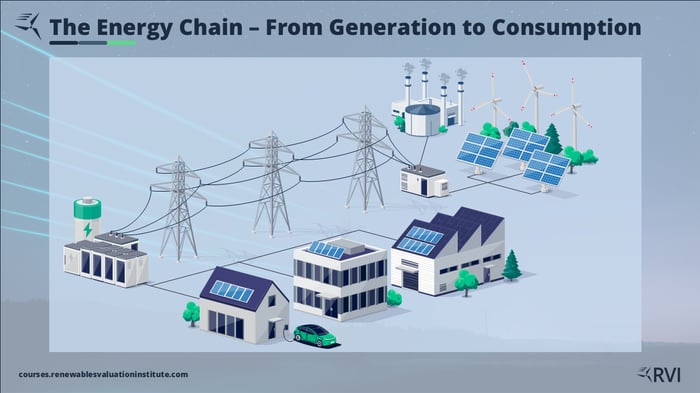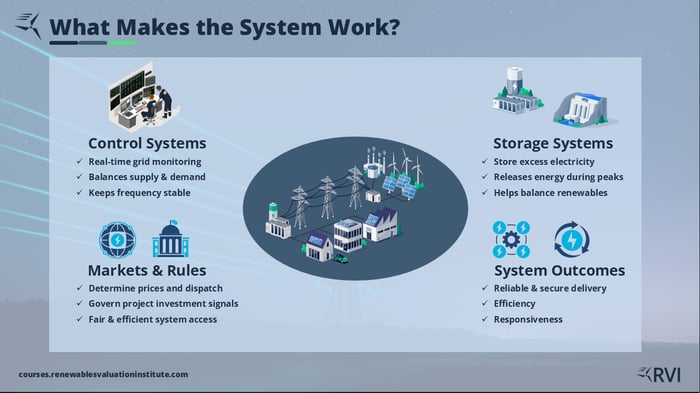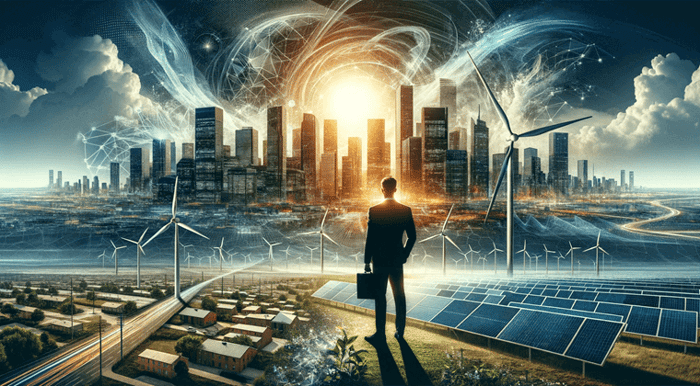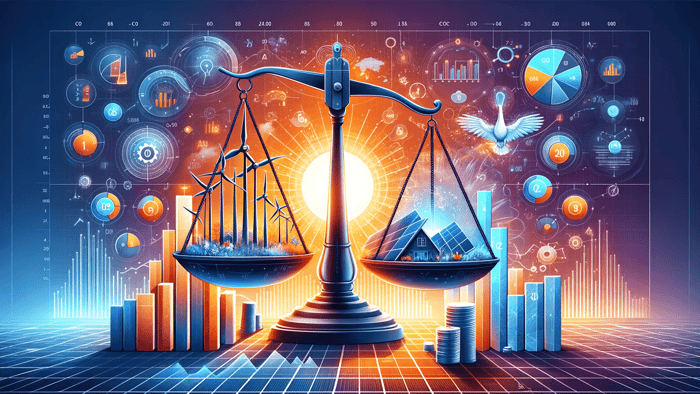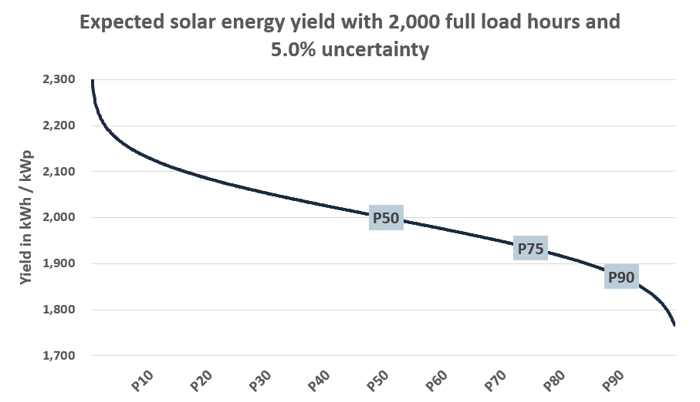Introduction: What Is an Energy System — and Why Should You Care?
What is an energy system? It’s a question that often goes unanswered in many business and finance discussions around electricity, renewables, and infrastructure. Yet understanding this concept is crucial — especially for professionals working in energy project development, valuation, or grid-connected technologies.
Put simply, an energy system is the entire chain of processes and infrastructure that ensures electricity is generated, transported, and delivered exactly where it’s needed. Knowing the basics of what an energy system is helps you make better decisions — whether you're evaluating power plant economics or designing a project finance model.
Defining an Energy System
At its core, an energy system is the complete network of infrastructure and institutions responsible for generating, transmitting, distributing, storing, and consuming electricity.
The journey of electricity begins at the generation level — solar panels, wind turbines, hydro dams, nuclear stations, or fossil fuel plants. From there, electricity is transported across long distances via transmission lines, enters the distribution system near population centers, and ultimately reaches homes, businesses, and industries.
This flow — from source to socket — is what we call the electricity value chain.
What Is an Energy System in Practice?
In most countries, an energy system includes four major steps:
Generation – Electricity is produced from sources like solar, wind, hydro, nuclear, or fossil fuels.
Transmission – High-voltage lines carry electricity over long distances.
Distribution – Voltage is stepped down and distributed to local neighborhoods and users.
Consumption – Homes, businesses, and industries use the electricity to power their operations.
So when we ask, what is an energy system, we're really talking about this full cycle — from production to end use — and the infrastructure that keeps it all running in sync.
This structure is often supported by regulatory bodies, market operators, and technological innovations that coordinate supply and demand in real-time.
What Is Physically Flowing Through an Energy System?
When people ask, "What is an energy system?", they often imagine power lines and power plants — but don’t fully grasp what’s actually flowing through the wires.
Electricity is the flow of electrons, driven by voltage through conductive materials. Three fundamental physical concepts underlie how every energy system works:
Voltage (V): The electric potential or "pressure" that pushes electrons through the circuit.
Current (A): The rate at which electrons move, or the electric flow.
Resistance (Ω): The opposition to that flow, which causes energy loss as heat.
To minimize resistance losses, most modern energy systems transmit power at high voltage and low current. This reduces the amount of heat lost across long distances. However, high voltage is also extremely dangerous, which is why it is stepped down through transformers before entering residential and commercial areas.
Understanding these basic principles helps demystify why transmission lines look the way they do and why energy is priced differently depending on when and where it's used.
What Makes an Energy System Work?
Asking what is an energy system means looking beyond the wires and turbines. An energy system is as much about coordination and control as it is about generation and transmission.
There are four main supporting elements that keep modern energy systems stable and responsive:
1. Control Systems
Grid operators monitor the electricity system in real time and make constant adjustments to ensure that supply always matches demand. If there is too much power, frequency rises; if there is too little, frequency drops. Maintaining this balance is one of the key tasks in system operations.
2. Storage Systems
Energy storage solutions — such as batteries, pumped hydro, and thermal storage — play an increasingly important role. They store excess electricity when supply is high and release it when demand spikes. This adds flexibility and helps manage variability, especially with solar and wind.
3. Markets and Rules
Markets determine when and how electricity is generated, priced, and consumed. Dispatch decisions (i.e., which plants are selected to generate power at a given moment) depend on market bids, availability, and policy rules. Regulatory frameworks also shape long-term investment decisions by defining what types of energy are incentivized.
4. System Outcomes
When all components are working well together, the energy system becomes:
Reliable: Electricity is delivered consistently.
Secure: The system can withstand failures or sudden demand surges.
Efficient: Resources are used optimally with minimal waste.
Responsive: The system can adjust quickly to weather changes, market shifts, or technical issues.
Why Energy Systems Are Becoming More Complex
If you’re still wondering what is an energy system, it’s important to understand how today’s systems are evolving. Traditionally, energy flowed in one direction — from large centralized plants to consumers. But now, with the rise of distributed and intermittent renewable energy resources, energy flows can be bi-directional.
Add in battery storage, electric vehicles, smart appliances, and demand response programs, and the energy system starts to look more like an interactive web than a one-way pipeline.
This evolution makes understanding the fundamentals of an energy system even more critical for professionals working in:
Renewable energy project development
Energy finance and valuation
Grid operations
Policy and regulatory strategy
Final Thoughts: What Is an Energy System?
At its core, an energy system is the framework that allows society to turn natural resources into usable electricity — and to deliver it safely, efficiently, and reliably.
If you're working in any part of the electricity value chain, understanding how an energy system functions isn't just helpful — it's essential. It gives context to investment decisions, project risks, policy discussions, and market behavior.
Build Your Expertise with the Renewables Valuation Analyst Certification Program
If you're serious about building a career in renewable energy finance, mastering the fundamentals, such as understanding the basics of an energy system, is just the beginning. Our Renewables Valuation Analyst (RVA) Certification Program takes your knowledge to the next level, giving you the tools, techniques, and real-world skills needed to analyze, structure, and value renewable energy projects with confidence.
Through a comprehensive learning journey, you’ll develop expertise in:
Renewable energy financial modeling from both an equity and debt perspective
Understanding complex financing structures, project risks, and bankability metrics
Building professional-grade financial models for solar, wind, and hydro projects
Gaining hands-on experience through real-world case studies
By completing the RVA Certification Program, you'll not only strengthen your technical skills but also position yourself for success in one of the fastest-growing industries worldwide.



